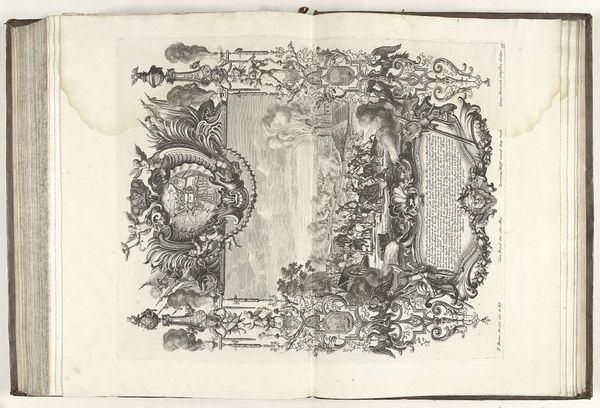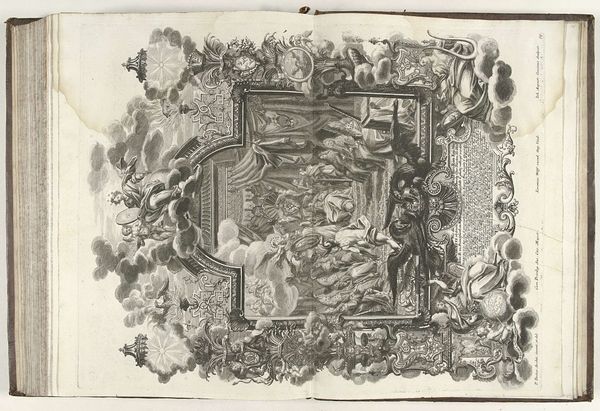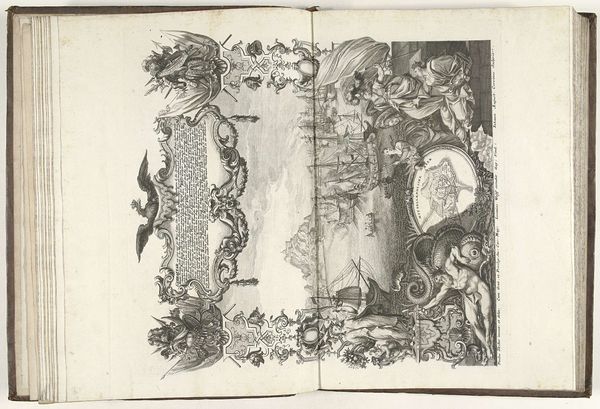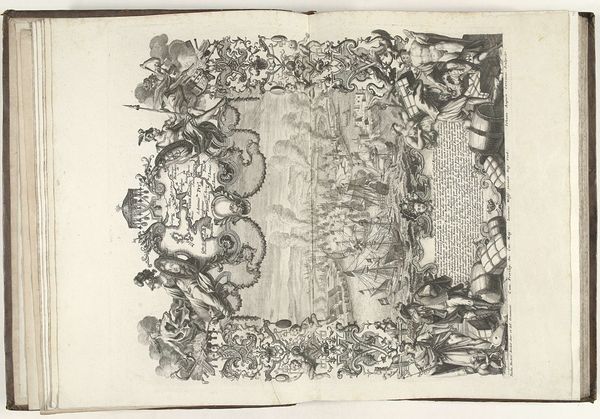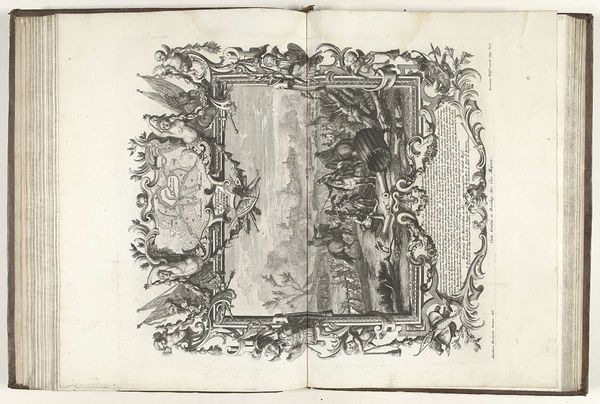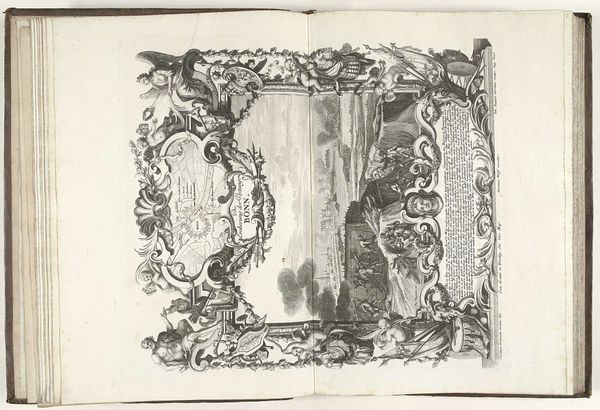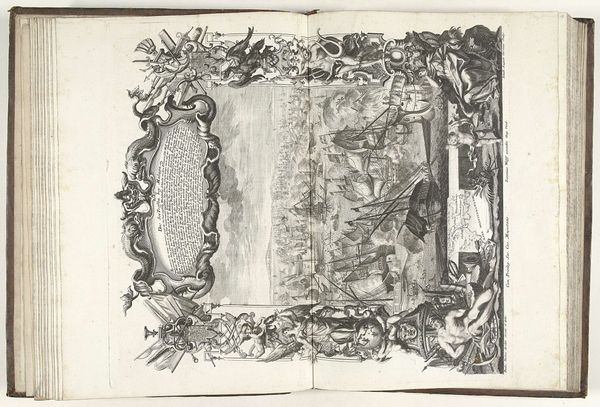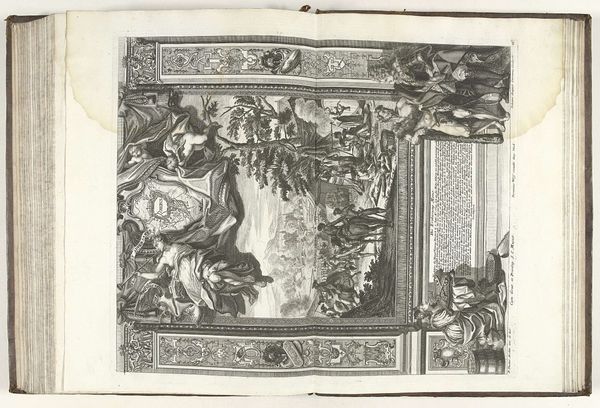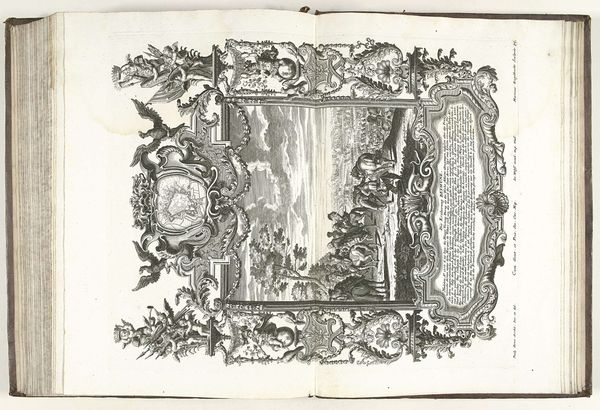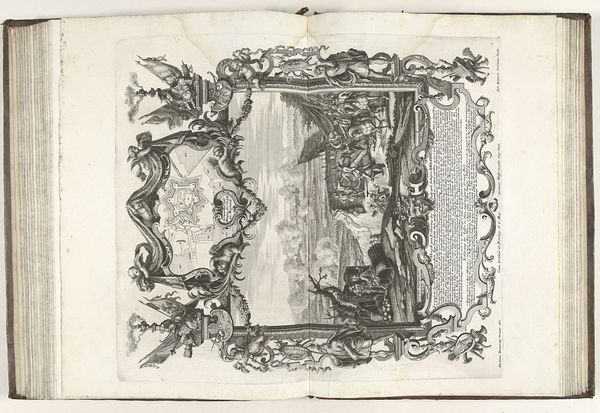
drawing, ink, engraving
#
drawing
#
baroque
#
pen drawing
#
ink
#
cityscape
#
history-painting
#
engraving
Dimensions: height 450 mm, width 385 mm
Copyright: Rijks Museum: Open Domain
Curator: At first glance, there is a tension here between the panoramic cityscape and the incredibly elaborate ornamental frame. Editor: Exactly! This engraving, "Overgave van Gent, 1709," by Martin Engelbrecht, produced between 1712 and 1715, employs both ink and engraving techniques to celebrate a military victory. It's currently housed at the Rijksmuseum. Curator: It feels like an odd juxtaposition; the meticulous rendering of Gent is almost overwhelmed by the allegorical figures and flourishes. I can hardly decide where to focus, the formal presentation drawing from Baroque sensibilities is fighting the realism within. Editor: That "realism", as you call it, serves the ideological purpose of memorializing power. The means of production—engraving—allowed for wide dissemination, effectively broadcasting the might of the victorious army. What does the choice of print medium communicate? Was it about the labour and its relationship to the image? This contrasts sharply with, say, painting at the time. Curator: Perhaps, but I’m drawn to the compositional arrangement itself. See how the linear perspective in the central cityscape draws your eye into the distant horizon, even though there's so much intricate detail in the immediate foreground. The density of the bordering decoration paradoxically amplifies the expansive feel. Editor: True, and I also find myself thinking about who this image was made for and the labour conditions and socio-economic environment in which it was produced. What class of patron was seeking to acquire such commemorative prints and how did the supply chain dictate its content, production values, or meaning? Curator: Regardless, that contrast, whether deliberate or accidental, contributes significantly to its dynamic visual appeal, even today. A real demonstration of form and composition meeting meaning. Editor: Ultimately, though, by understanding its purpose as more than a mere aesthetic achievement, but instead as a statement of wealth and power we reveal its core identity as part of a specific historical-material reality. It is always connected.
Comments
No comments
Be the first to comment and join the conversation on the ultimate creative platform.
